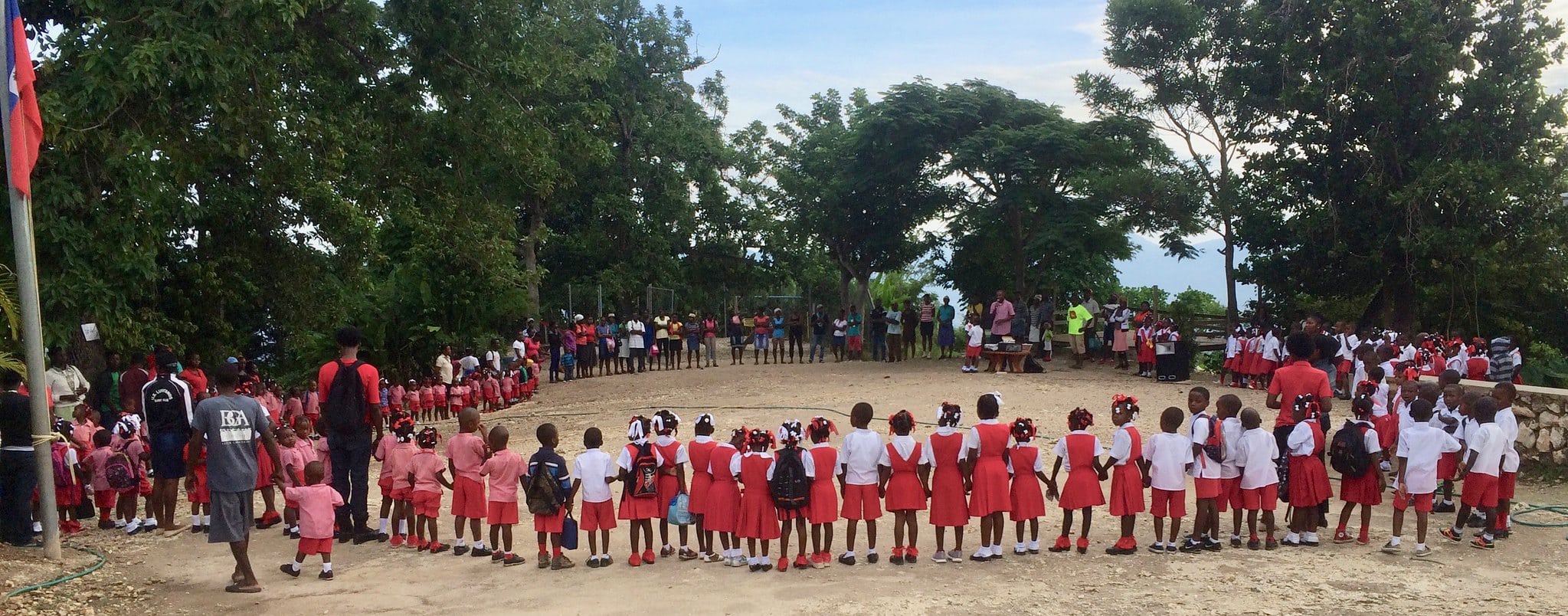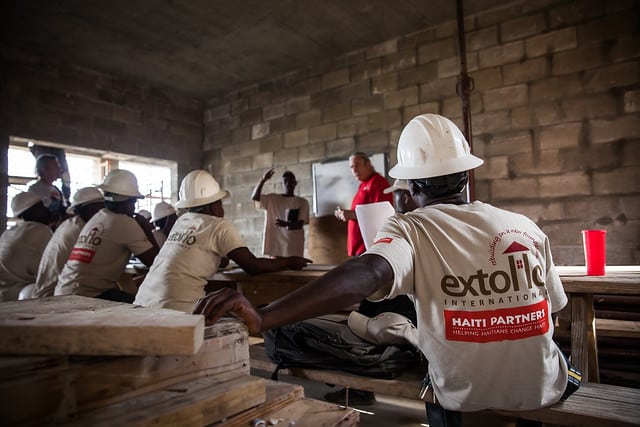
Recently we were invited to answer the following question about local ownership at the Children’s Academy. In the course of responding we got into some depth about how we have, and continue to, address this vital issue. Realizing the importance of this question both in the case of the Children’s Academy, but also in international development in general, we thought we’d share the full response here. Thank you for your interest, and if you have any questions, please share in the comments section and we’ll be glad to respond as best we can!
~~~~~~~~~~~~~~~
How do people in the community see the Children’s Academy and Learning Center? Do they see it as their own in that they are committed to taking care of it and maintaining it or do they see it as a project by Americans and brought to them?
This is a great question. Haiti is littered with development projects that were initiated by well-intentioned foreigners that failed because of a lack of local knowledge and investment. At Haiti Partners, we have always tried to be mindful of this. This is the driving idea behind our mission statement: Helping Haitians change Haiti through education. Ultimately, for any development to be sustainable for the long term, it has to be led and owned by the local population: Haitians themselves.
To thoughtfully answer your question, we need to share a little bit about how we have tried to deal with this issue in the course of the development of Haiti Partners and the Children’s Academy.
First, all on-the-ground staff in Haiti speak Haitian Creole – Haiti’s mother-tongue. If they are foreigners, they have also done immersions – living for months to years with local peasant families – to become familiar with the culture. Haiti Partners’ Director, John Engle, is no exception to this. John did his immersion in 1991, speaks fluent Haitian Creole, and has spent most of the last 28 years not only living in Haiti, but living in the community where the Children’s Academy is built. He and Merline met in 2002 and married in 2003 and she moved into the community with him. The fact that John was a known quantity in the community for so long and was able to interact in the local tongue in a culturally sensitive way and that Merline, a Haitian, integrated into the community as well, all served to help us build trust early on and as the Children’s Academy later took shape. Most development projects in Haiti are implemented by newcomers to the country who are unfamiliar with the culture and who typically function in French, a language that the majority of Haitians do not speak, even though it, along with Haitian Creole, are official languages.
Next, rather than simply arrive in the community with a ready-made project, we spent over a year holding monthly community-wide meetings and structured discussion groups in order to identify local development priorities and cultivate relationships of trust with local residents. It was in these meetings that the community members themselves identified education and the creation of a school as their main development priority. These open community meetings continue to this day. They started at the nearby Catholic church but then transitioned to the Children’s Academy once it was built.
 As the Children’s Academy was built and policies were established, the community and their investment in the project continued to be a central consideration. With help from a partner organization, Extollo International, a number of local community members were trained in construction techniques and went on to actually build the second building. These included parents of students and neighbors to the school, both men and women. In addition, understanding that parents would struggle with tuition costs, we created a four hour per week service requirement. Under this system, parents contribute what they can – time and energy – to the proper ongoing functioning of the school. In these ways, the local community – in a very concrete and ongoing way – maintains their investment and ownership over the school.
As the Children’s Academy was built and policies were established, the community and their investment in the project continued to be a central consideration. With help from a partner organization, Extollo International, a number of local community members were trained in construction techniques and went on to actually build the second building. These included parents of students and neighbors to the school, both men and women. In addition, understanding that parents would struggle with tuition costs, we created a four hour per week service requirement. Under this system, parents contribute what they can – time and energy – to the proper ongoing functioning of the school. In these ways, the local community – in a very concrete and ongoing way – maintains their investment and ownership over the school.
To return to the question: Having paid such careful attention to local knowledge and investment throughout the course of the development of the Children’s Academy, we believe that the community is not only invested in its continued success, but they feel a real sense of ownership over it as their own school. Recently, as the political unrest that gripped the nation reached into the countryside, the school itself faced a threat of violence. The fact that the school survived this unscathed, and that it was members of the community itself – not Haiti Partners’ staff – that organized and led a dialogue that resulted in the resolution of the conflict, we feel, is a testament to how much the community views the school as their own and what they are willing to do to care for, maintain and protect it. (Read about this story here.)
It’s also been encouraging to us to see the growing understanding of and appreciation for partnership. The Children’s Academy leadership team, the school committee, the staff and the parents see that they are running the school. They’re addressing day to day issues, challenges and opportunities. And, they also see the importance of partnership; partnership with Haiti Partners, partnership with Beyond Borders which provides training and support for the child protection program and for the SASA program which has the goal of eliminating violence against women and girls, and with other key partners. They’re managing these relationships with skill! In our estimation, they’re becoming skilled leaders capable of creating conditions that foster engagement among everyone who has a stake in the mission and vision.
~~~~~~~~~~~~~~~
Additional links for stories, research, articles which reinforce the community’s investment in and commitment to the Children’s Academy and Learning Center:
Haiti Partners
PO Box 7882
Delray Beach, FL 33482
Email: hello@haitipartners.org
Phone: (772) 539-8521